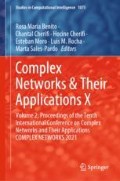Abstract
The active global SARS-CoV-2 pandemic caused more than 167 million cases and 3.4 million deaths worldwide. The development of completely new drugs for such a novel disease is a challenging, time intensive process and despite researchers around the world working on this task, no effective treatments have been developed yet. This emphasizes the importance of drug repurposing, where treatments are found among existing drugs that are meant for different diseases. A common approach to this is based on knowledge graphs, that condense relationships between entities like drugs, diseases and genes. Graph neural networks (GNNs) can then be used for the task at hand by predicting links in such knowledge graphs. Expanding on state-of-the-art GNN research, Doshi et al. recently developed the Dr-COVID model. We further extend their work using additional output interpretation strategies. The best aggregation strategy derives a top-100 ranking of candidate drugs, 32 of which currently being in COVID-19-related clinical trials. Moreover, we present an alternative application for the model, the generation of additional candidates based on a given pre-selection of drug candidates using collaborative filtering. In addition, we improved the implementation of the Dr-COVID model by significantly shortening the inference and pre-processing time by exploiting data-parallelism. As drug repurposing is a task that requires high computation and memory resources, we further accelerate the post-processing phase using a new emerging hardware—we propose a new approach to leverage the use of high-capacity Non-Volatile Memory for aggregate drug ranking.
Access this chapter
Tax calculation will be finalised at checkout
Purchases are for personal use only
Notes
- 1.
Our implementation of the experiments and the model can be found here: https://drive.google.com/file/d/1hYxMe3AFwcJ4UKsn8SPsZVPW3buXe0u4/view?usp=sharing.
- 2.
To precisely define the cosine similarity between two given drugs \(i,j\), let \(\hat{s}_{*i},\hat{s}_{*j}\) be their prediction scores along the disease dimension. Then their similarity is defined as \(\hat{s}_{*i}\cdot \hat{s}_{*j}\).
References
Ashburn, T.T., Thor, K.B.: Drug repositioning: identifying and developing new uses for existing drugs. Nat. Rev. Drug Discov. 3(8), 673–683 (2004)
Bordes, A., Usunier, N., García-Durán, A., Weston, J., Yakhnenko, O.: Translating embeddings for modeling multi-relational data. In: Neural Information Processing Systems (NeurIPS), pp. 2787–2795 (2013)
Buitinck, L., et al.: API design for machine learning software: experiences from the scikit-learn project. In: ECML PKDD Workshop: Languages for Data Mining and Machine Learning, pp. 108–122 (2013)
Doshi, S., Prabhakar Chepuri, S.: Dr-COVID: graph neural networks for SARS-CoV-2 drug repurposing. CoRR (2020)
Frasca, F., Rossi, E., Eynard, D., Chamberlain, B., Bronstein, M.: Federico Monti. Scalable inception graph neural networks. CoRR, SIGN (2020)
Morselli Gysi, D., et al.: Network medicine framework for identifying drug repurposing opportunities for COVID-19. CoRR (2020)
Ioannidis, V.N., et al.: DRKG - drug repurposing knowledge graph for COVID-19 (2020). https://github.com/gnn4dr/DRKG/
Izraelevitz, J., et al.: Basic performance measurements of the intel optane DC persistent memory module. CoRR, abs/1903.05714 (2019). http://arxiv.org/abs/1903.05714
Kingma, D.P., Ba, J.: Adam: a method for stochastic optimization. In: International Conference on Learning Representations (ICLR) (2015)
Kipf, T.N., Welling. M.: Semi-supervised classification with graph convolutional networks. arXiv preprint arXiv:1609.02907 (2016)
Kißig, O., Taraz, M., Cohen, S., Doskoč, V., Friedrich, T.: Drug repurposing for multiple COVID strains using collaborative filtering. In: ICLR Workshop on Machine Learning for Preventing and Combating Pandemics (MLPCP@ICLR) (2021)
Kißig, O., Taraz, M., Cohen, S., Friedrich, T.: Drug repurposing using link prediction on knowledge graphs. In: ICML Workshop on Computational Biology (CompBio@ICML) (2021)
Nicola, M., et al.: The socio-economic implications of the coronavirus pandemic (COVID-19): a review. Int. J. Surg. 78, 185–1939 (2020)
Pandey, P.: COVID-19 clinical trials dataset (2021). https://www.kaggle.com/parulpandey/covid19-clinical-trials-dataset. Accessed 19 Feb 2021
Pearson, K.: F.R.S. LIII. On lines and planes of closest fit to systems of points in space. Lond. Edinb. Dublin Phil. Mag. J. Sci. 2, 559–572 (1901)
Pedregosa, F., et al.: Scikit-learn: machine learning in Python. J. Mach. Learn. Res 12, 2825–2830 (2011)
Munir Sarwar, B., Karypis, G., Konstan, J.A., Riedl, J.: Item-based collaborative filtering recommendation algorithms. In: International Conference on World Wide Web (2001)
Scarselli, F., Gori, M., Chung Tsoi, A., Hagenbuchner, M., Monfardini, G.: The graph neural network model. IEEE Trans. Neural Netw. 20(1), 61–80 (2008)
Shah, B., Modi, P., Sagar, S.R.: In silico studies on therapeutic agents for COVID-19: drug repurposing approach. Life Sci. 252(3), 117652 (2020)
Waddington, D., Dickey, C., Hershcovitch, M., Seshadri, S.: An architecture for memory centric active storage (MCAS). arXiv preprint arXiv:2103.00007 (2021)
Wang, M., et al.: Deep graph library: a graph-centric, highly-performant package for graph neural networks. arXiv preprint arXiv:1909.01315 (2019)
Wishart, D.S., et al.: Drugbank 5.0: a major update to the drugbank database for 2018. Nucleic Acids Res. 46, D1074–D1082 (2018)
Wood, A., Hershcovitch, M., Waddington, D., Cohen, S., Chin, P.: Non-volatile memory accelerated posterior. In: IEEE High Performance Extreme Computing Conference (2021)
Wood, A., et al.: Non-volatile memory accelerated geometric multi-scale resolution analysis. In: IEEE High Performance Extreme Computing Conference (2021)
World Health Organization: International Clinical Trials Registry Platform (ICTRP) (2021). https://www.who.int/clinical-trials-registry-platform. Accessed 19 Feb 2021
Ye, C., Swiers, R., Bonner, S., Barrett, I.P.: Predicting potential drug targets using tensor factorisation and knowledge graph embeddings. CoRR, abs/2105.10578 https://arxiv.org/abs/2105.10578(2021)
Zheng, D., et al.: DGL-KE: training knowledge graph embeddings at scale. In: SIGIR Conference on Research and Development in Information Retrieval (2020)
Zitnik, M., Agrawal, M., Leskovec, J.: Modeling polypharmacy side effects with graph convolutional networks. Bioinformatics 34, i457–i466 (2018)
Author information
Authors and Affiliations
Corresponding author
Editor information
Editors and Affiliations
Rights and permissions
Copyright information
© 2022 The Author(s), under exclusive license to Springer Nature Switzerland AG
About this paper
Cite this paper
Cohen, S. et al. (2022). Drug Repurposing Using Link Prediction on Knowledge Graphs with Applications to Non-volatile Memory. In: Benito, R.M., Cherifi, C., Cherifi, H., Moro, E., Rocha, L.M., Sales-Pardo, M. (eds) Complex Networks & Their Applications X. COMPLEX NETWORKS 2021. Studies in Computational Intelligence, vol 1073. Springer, Cham. https://doi.org/10.1007/978-3-030-93413-2_61
Download citation
DOI: https://doi.org/10.1007/978-3-030-93413-2_61
Published:
Publisher Name: Springer, Cham
Print ISBN: 978-3-030-93412-5
Online ISBN: 978-3-030-93413-2
eBook Packages: EngineeringEngineering (R0)

